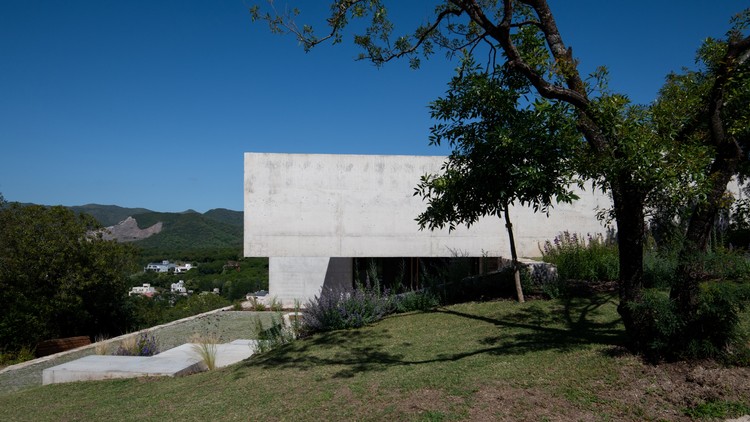Apartment building on the harbour Zucchi -amp; Partners
2011-12-16 00:00
架构师提供的文本描述。这座新的住宅大厦是一个大型市区重建项目的一部分,位于一条人工运河两侧的拉文纳车站,作为该地区工业的港口。博埃里工作室的总体计划是在海滨新建一个平行于水的公园和一系列相当高的空间,这些区域目前属于海港分局,但最终应该向公众开放。在这个“滑动门”未来的不确定性中,我们设计了一个双面住宅综合体,涉及到现有的城市结构,但准备向水的边缘开放,其未来可能转变为一条长廊。在城市一侧,一座有盖停车场的绿色城墙通向一个俯瞰水面的高耸的中央法院。一些小商店和通往垂直配电井的中庭打开了这个半公共的“广场”,它将通过一个与结构平行的坡道连接到水上长廊。
Text description provided by the architects. The new residential building is part of a large urban renewal project next to the Ravenna station on both sides of an artificial canal serving as a harbour for the industries of the area. The overall plan by Boeri studio envisages a new park parallel to the water and a series of rather tall volumes along the waterfront, which currently belongs to the harbour precinct but should in time become open to the public. Within the uncertainty of this “Sliding Doors” future, we designed a double-faced residential complex, relating to the existing city fabric but ready to open toward the water edge and its possible future transformation into a promenade. On the city side, a green rampart hosting the covered parking leads to a raised central court overlooking the water. A number of small shops and the atriums leading to the vertical distribution shafts opens onto this semi-public “piazza”, which will be connected to the water promenade by a ramp running parallel to the structure.
这两块建筑的几何变形以及将它们连接在水面上的“桥”,为中央法院提供了一种空间包围和亲密感。不同的地块高度与对市中心的长期看法和建筑群的太阳方向有关。这些建筑物的北侧高地以“体积”的方式处理,而南面则以悬垂阳台的长水平线为标志。建筑物的主要正面是一些水平的“凹槽”造型-每层两层高-构成不同色调的灰泥。粘土色的不同色调和钴蓝色的色调,创造了一个“马赛克”模式-某种程度上受到拉文娜著名的拜占庭艺术的启发-这在建筑的感知上产生了某种标量的扭曲。建筑物的这一瞬间“伪装”有助于将其“家庭”维度与其从水边和城市的感知联系起来,在那里它是一个临时的“地标”,等待着开发改造城市的景观或这一部分。
The geometric inflections of the two building blocks and the lived-in “bridge” connecting them on the water side contribute to give a sense of spatial enclosure and intimacy to the central court. The different height of the blocks are related to the long views toward the inner city and to the solar orientation of the complex. While the north side elevations of the buildings are treated in a rather “volumetric” way, the south ones are marked by the long horizontal lines of the overhanging balconies.The main facades of the building are marked by a number of terracotta horizontal “notched in” mouldings – two for every floor height – framing a plaster rendering of different shades of warm, clay-coloured shades in different hues and a cobalt blue one, creating a “mosaic” pattern - somehow inspired by Ravenna’s famous Byzantine art – which generates a sort of scalar distortion in the perception of the building. This effect of momentary “camouflage” of the dimension of the building helps connecting its “domestic” dimension to its perception from the waterside and the city, where it stands alone as a temporary “landmark” waiting for the development to transform the landscape or this part of the city.
整个建筑群是按照“可持续”和能源意识建筑的最新标准构思和实现的。我们仔细研究了建筑质量与太阳方向的关系,并深入研究了建筑表面和开放的集体空间上所有时间和季节的阴影模式。高层建筑位于北侧,下部建筑位于南侧。建筑物南侧的一排排阳台遮住了客厅,使其免受夏季阳光的照射,同时也接纳了冬季较低的光线,极大地提高了建筑群的能源效率。北立面的特点是较小的开口,造成了较低的热透过率。该建筑物所需能源的很大一部分是由安装在这两座建筑物屋顶露台上的太阳能电池板提供的。
The whole complex is conceived and realized following the latest criteria for “sustainable” and energy conscious buildings. The building masses are carefully studied in relationship with the sun orientation, with an in-depth study of the shadow pattern at all hours and seasons both on the building surfaces and on the open collective spaces. The higher building is located on the north side and the lower on the south one. The rows of balconies on the south side of the buildings screen the living rooms from the summer sun rays, while admitting the lower winter ones, greatly contributing to the energy efficiency of the complex. The north facades are marked by smaller openings contributing to low thermal transmittance. A significant part of the energy required by the building is provided by solar panels placed on the rooftop terraces of the two buildings.
厚厚的“大衣”绝缘完成了一层石膏在网格上提供非常低的传热值,节约能源,并创造了很高的环境舒适性的住宅。所有材料都是可生物降解或易于处理的:窗台用石料,窗框用铁杉木,大部分外表面用天然灰泥。
The thick “overcoat” insulation finished by a layer of plaster on mesh provides very low values of heat transmittance, saving energy and creating high environmental comfort for the dwellings. All materials are biodegradable or easily disposed of: stone for the window-sills, hemlock wood for the window frames, natural plaster for most of the exterior surfaces.
 举报
举报
别默默的看了,快登录帮我评论一下吧!:)
注册
登录
更多评论
相关文章
-

描边风设计中,最容易犯的8种问题分析
2018年走过了四分之一,LOGO设计趋势也清晰了LOGO设计
-

描边风设计中,最容易犯的8种问题分析
2018年走过了四分之一,LOGO设计趋势也清晰了LOGO设计
-

描边风设计中,最容易犯的8种问题分析
2018年走过了四分之一,LOGO设计趋势也清晰了LOGO设计




































































